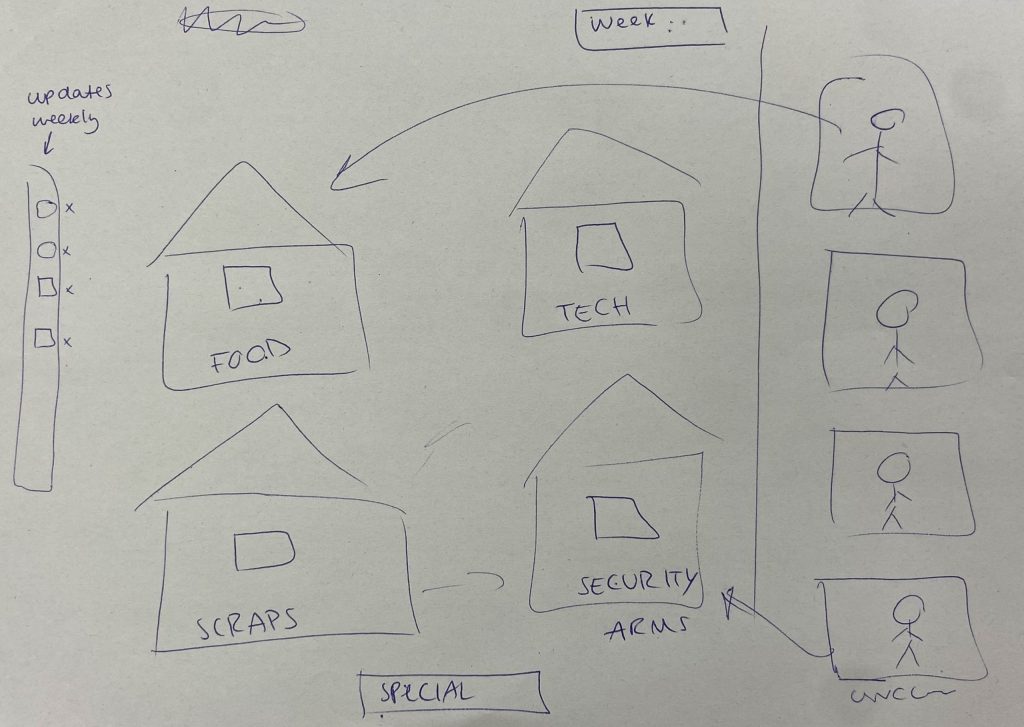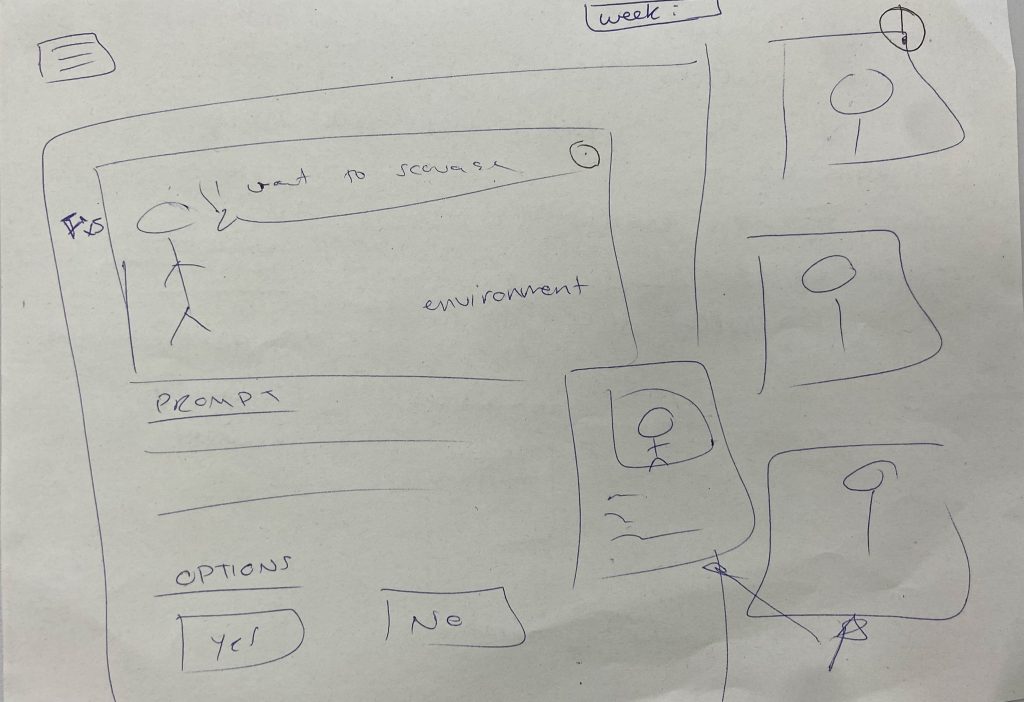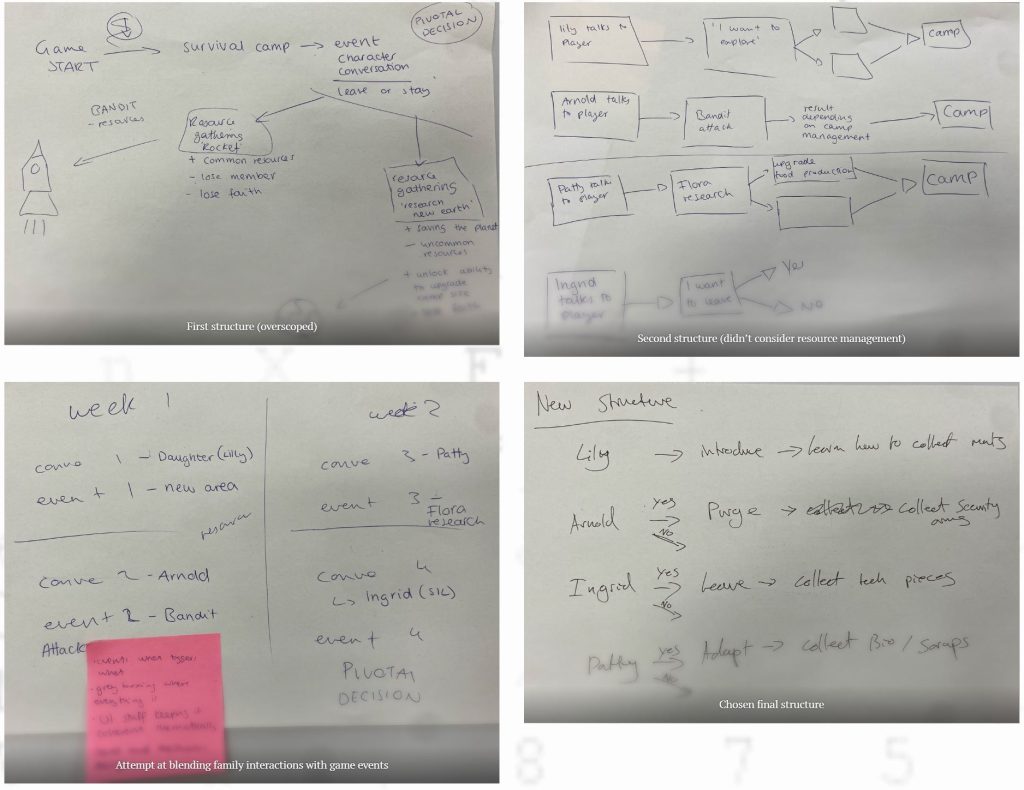Monday 27th January






Note: The writing for each game is taken from the GDDs and simplified, so it is not my own writing. This is any writing in colour above.
Thursday 30th Jan
Meeting the team and determining our vertical slice
To decide which games we would be working on, we completed a voting survey. We could choose our preferred game and roles, and other games we would be happy working on. We could decide if the game or role was more important to us, and from there our teachers assigned our groups. The team follows a loose hierarchy of 5 people, the technical designer taking the lead as spokesperson, with the others split between art and design roles.
I was placed in group two – Those Left Behind, as the Environment artist, working with Joe, Anna, Yiran and Gabi. I was very happy with my assigned team, as I got both the game and role I wanted. We got to know each other and our skill-sets, sharing our visions for the game. We were tasked with creating a vertical slice, a snippet of the game exhibiting core mechanics and aesthetics. We analysed the GDD to determine the games most essential parts, sketching up designs and requirements, many of which were later improved upon.


We decided to focus on a short snippet of game play before a core story event in game – Deciding to leave earth, or stay and make the most of it. This would introduce characters to both management mechanics and narrative outcomes, as well as establishing a strong visual style of a post-apocalyptic world. Below is the story event our vertical slice will lead to.

Due to family relationships being a core aspect of game play, we thought it was important for the player to interact with each of them to understand their role, relationship and personalities better. The player would face a series of linear narrative events with each family member making decisions with varied outcomes to progress the game. This allowed for a simplified structure of the narrative, eliminating the randomness of events. Once the player has progressed through all narrative events they will then face the question of the ultimate goal.
As a result, camp management would only assist in game progression. Decisions made in narrative events would create certain resource requirements for players to work towards attaining, once complete they would move on to the next narrative event. Objectives would vary depending on choices made by the player at the end of the narrative event.

Our final vertical slice structure can be seen on the bottom right photo, providing a small window into the large scope of the game world, emphasising the core mechanics of narrative choice and management.
We agreed our first objectives should be to research the GDD we would be working from, as well as understand what our roles would entail. This would help us each know everything we needed to know for our individual roles to better prepare us for the development process. We agreed to meet as a team every Monday and Thursday to talk over our deadlines and any problems we may encounter, as well as to determine our hierarchy of tasks.
I made a discord server and added all my teammates, creating designated channels for each part of the development process to organise conversations. Joe created a GitHub repository for our projects where we could upload our completed work for him to implement into unity.
End of week 1 😀
Shared blog post:
Reply